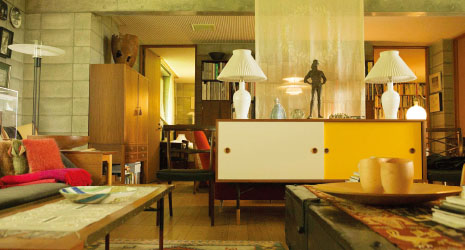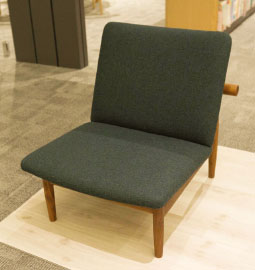Home > Highlighting JAPAN > Highlighting Japan November 2018 > Living In Tune with Nature: Japan's Connection to Wood
Highlighting JAPAN


The Satisfying Union of Scandinavian Furniture and Japaneseness
Scandinavian culture continues to gain recognition in Japan, and Scandinavian furniture has consistently enjoyed vast popularity here. Noritsugu Oda, a world-renowned chair researcher well versed in Scandinavian culture, explains why so many Japanese are drawn to those warm, simple and beautiful pieces of wooden furniture.
Noritsugu Oda says the climate of Scandinavian countries—where the summer days remain light far into the night but the winters are cold, dark and long—is one of the reasons people there gained such fine woodworking skills. “In Scandinavia, people had to enrich the long hours they are forced to spend indoors,” he notes. “And since they had little in the way of natural resources, they would make necessities themselves from materials at hand instead of buying them. This practice led woodworking and handcrafting to take root in their day-to-day lives.”
Oda is a one-of-a-kind researcher who specializes in chairs. The items he has collected over fifty years include more than 1350 chairs, various other furniture and everyday items as well as documents. Referred to as the Oda Collection, it is highly regarded around the world.
Oda believes the reason Japanese people are fond of Scandinavian woodworking and furniture is that Scandinavians and Japanese share common values. “One similarity is that both prefer natural resources such as wood, and also value simplicity in design that draws from the natural qualities of the materials,” he explains. “Perhaps it is in our DNA.”
The high quality of woodworking technology is another common characteristic. “Japanese woodworking has a genre called sashimono, meaning furniture built without nails,” he says. “Even when putting together different types of wood, the craftsmens’ deep knowledge of their materials allows them to create flawless pieces without measurement errors. There are many cases of people from the Scandinavian architecture and furniture-making sphere who come to apprentice under shrine and teahouse carpenters.
At times Japanese woodworking techniques have influenced Scandinavian works. A Danish-made cabinet from the 1930s—housed in Oda’s residence—is a perfect example. The piece features double sliding doors, a style unique to Japan, instead of the usual double doors, and also uses metal handles that are commonly seen on Japanese tansu chests. “Even now, you can see Japanese-influenced Scandinavian furniture,” Oda notes as he shows relevant examples of chairs crafted by Danish designers.
“Contemporary designer Hans Sandgren Jakobsen designed the ‘Eri’ Tatami Chair based on the motif of eri—the collar of kimono,” Oda says. “Having stayed in Japan, he also created a chair that eases the issue of numbed legs from seiza—sitting on one’s folded legs. In the past, Verner Pantone (1926-98) and Finn Juhl (1912-89)—both world-famous Danish architects and designers—designed the ‘Tatami Chair’ and the ‘Japan Series’ chair, respectively. I feel that Jakobsen understands and respects Japanese culture like they did.”
Besides furniture, many people find a sense of warmth and nostalgia in wooden items that are carefully crafted. “The more advanced technology becomes, the more people crave natural materials and wish to live a more human-paced life. Unfortunately, these days our lives are infested with ‘fast’ products,” Oda remarks.
“Our current culture is one that emphasizes buying replacements, but I think the relationship between people and things should be much closer,” he continues, “because if you take good care of well-made items, you can use them for a long time. Wood does not just last for a lifetime—it actually lasts for two or three lifetimes.”
Oda’s heartfelt wish, even though he realizes it may not always be possible, is for people to choose items of good quality, since wood can last for several lifetimes. Following the Scandinavian example and cherishing the symbiotic culture with trees would further enrich the mind and lives of Japanese people, who have loved trees since antiquity.
© 2009 Cabinet Office, Government of Japan








